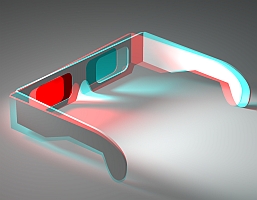A system developed by a University of Minnesota medical student helps rehabilitating stroke patients gain more use of their hands and arms by visualizing their thoughts through virtual reality. Alexander Doud, who developed the system while a masters degree student in the lab of Minnesota biomedical engineering professor Bin He, is scheduled to report his findings today at a meeting of American Heart Association in Dallas.
Among the techniques for stroke patients in rehab is to have a therapist physically move the patient’s hand and arm, while asking the patient to imagine making that movement. That practice technique helps reactivate regions in the patient’s brain for making those movements.
Doud’s system captures the patient’s brain activity through an electroencephalogram (EEG) that measures electrical activity in the brain. The patient is then asked to visualize moving a hand or arm in a certain way, or to perform a simple task. The patient’s thoughts of hand or arm movement are then translated into virtual reality images displayed on anaglyphic (3-D) glasses, giving the illusion of the patients making those movements.
With lab colleagues at Minnesota, Doud tested the system with six stroke patients still experiencing weakness in one side of their bodies. The results show patients using the virtual reality system can achieve accuracies up to 81 percent in performing tasks like picking up a glass of tea or water.
Moreover, the patients can get these results in as few as three sessions, each two hours in length. Tests with controlling movements of a computer cursor that served as a control, show similar (87%) achievement levels.
Doud recognizes the study may prove the concept, but the system still needs more testing on larger samples and a greater variety of tasks. The team’s paper notes that stroke management in the U.S. is estimated to cost nearly $74 billion in 2010, and a system of this kind can reduce the amount of time a therapist needs to devote to a single patient, making rehab a more affordable experience for stroke patients.
In addition to studying medicine, Doud is founder (with Natalie Doud) of Synaptic Design, a Minneapolis human-factors design firm. The company, however, is not developing the virtual reality system tested in the study.
Read more:
- Clinical Trial Tests Ultrasound Device to Boost Stroke Drugs
- FDA Approves Robotic Device for Stroke Rehabilitation
- Clinical Trial to Test Stroke Hemorrhage Treatment
- Goggle Device Helps Distinguish Between Vertigo and Stroke
- No Disability Improvement Seen from Clot Device After Stroke
* * *


 RSS - Posts
RSS - Posts
You must be logged in to post a comment.